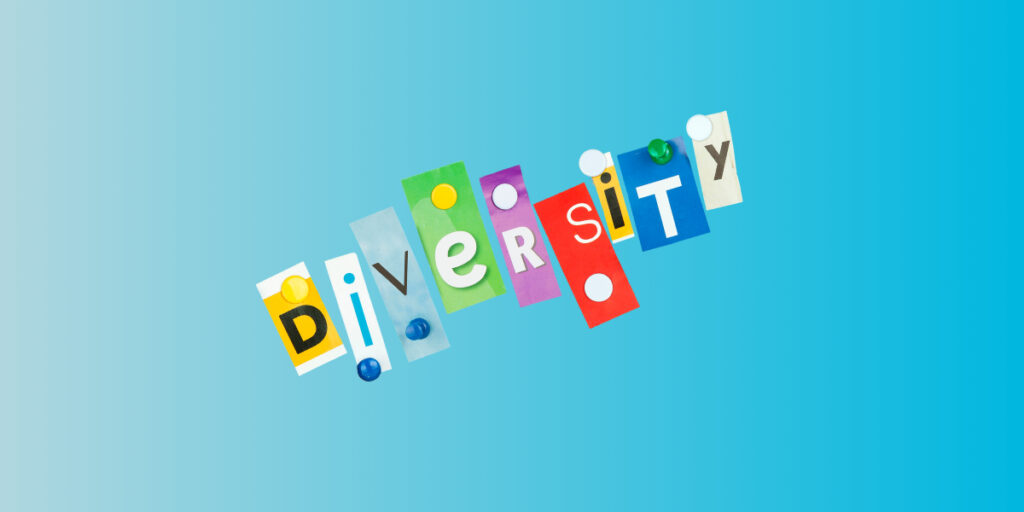
Grabbing lunch with colleagues can seem straightforward, but it quickly highlights the subtle habits and traditions that shape our work lives. These cultural differences at work become obvious in the smallest exchanges, from meeting styles to decision-making.
Workplaces now span continents, bringing together people with habits, beliefs, and unspoken rules shaped by their backgrounds. Collaboration grows richer and more complex when teams recognize and build on these cultural layers.
Understanding the nuances of global teamwork means looking beyond traditions or accent differences. Dive in, and this guide will give you real-world ways to bridge divides and turn diversity into your team’s greatest advantage.
Adopting Cross-Cultural Communication Tools for Every Meeting
Clear, effective communication in global teams means using tools and habits that ensure everyone is understood. With the right routines, differences fuel creativity—misunderstandings fade.
Miscommunications can be costly and leave employees feeling isolated. Consistent practices, like clarifying expectations and checking for understanding, help build inclusion and trust across cultures.
Base Messages on Shared Reference Points
Instead of using region-specific slang or stories, ground explanations in simple, visual language. For example, when launching a new tool, summarize with a diagram, not idioms. Employees from any background quickly grasp practical points.
Team members can say, “Let’s outline all steps in a flowchart so it’s clear for everyone.” This shared approach eliminates confusion without anyone feeling left out.
Adjusting language and using visual records keeps everyone on the same page, making collaboration faster and misunderstandings rarer.
Reinforce Key Info with Follow-Up Recaps
End each meeting with a two-sentence summary by email or chat. When you say, “Here are the three main takeaways, let me know if I missed anything,” international colleagues feel reassured they can double-check.
Set a rule for your team: recap every important conversation. This habit encourages quieter team members to raise questions later, strengthening equity in both understanding and contribution.
Recaps aren’t just memory aids—they show respect for time zones and perspectives, creating a culture of clarity for everyone involved.
| Meeting Style | Common Challenge | Recommended Adaptation | What to Try Next |
|---|---|---|---|
| Direct (US/Western Europe) | May seem abrupt to indirect cultures | Add small talk before the agenda | Open with a friendly exchange—”How was your weekend?”—before diving in |
| Indirect (East Asia) | Can be perceived as evasive | Request written follow-ups for clarity | Summarize agreements by email to confirm |
| Consensus-Based (Nordic) | Decision-making can be slow | Set time limits for discussions | Use: “Let’s spend 10 more minutes on this, then decide.” |
| Hierarchical (India/Latin America) | Junior staff may not speak up | Invite all voices during calls | Prompt quieter members: “Jin, what do you think about this?” |
| Task-Focused (Germany) | May overlook relational rapport | Schedule informal chats occasionally | Organize a monthly “virtual coffee” meeting |
Building Trust Through Everyday Actions
Trust forms the backbone of unified, effective global teams. Employees signal trustworthiness in diverse ways, often shaped by their cultural backgrounds or workplace norms.
Practical gestures—like meeting small deadlines and sharing honest status updates—build credibility across borders, even where personal connections are slow to form.
Encourage Consistent Small Wins
Deliver tasks as promised, even if they seem minor. Consistency shows reliability without grand displays. A team member can quietly finish updates by Tuesday, proving they respect team time and planning.
- Set recurring reminders for status updates—helps everyone stay aligned, not just local teams.
- Remind teammates you appreciate their punctuality—reinforces dependable habits globally.
- Limit multitasking on calls so everyone feels heard—shows focused attention regardless of background.
- Share incomplete work for review—signals transparency and invites feedback from all regions.
- Rotate who leads short meetings—gives trust-building roles to different voices.
These repeated actions speak louder than a one-off team-building event, especially in cultures where deeds outshine words.
Use Clear Feedback Loops
Feedback should move in both directions. Welcome suggestions from colleagues by saying, “Tell me if something’s unclear, and I’ll adjust.”
- Schedule regular check-ins to gather input—shows you’re responsive and open to evolving practices.
- Share compliments for process improvements—recognizes effort and encourages sharing more ideas.
- Record feedback in shared documents—ensures visibility and signals ongoing collaboration.
- Respect local holidays in project planning—shows awareness of global needs and priorities.
- Acknowledge missteps promptly—restores trust after confusion or errors.
Over time, mutual feedback across cultures helps every team member feel seen and valued—no matter where they’re based.
Clarifying Workplace Expectations from Day One
Aligning on ground rules prevents friction in global collaboration. Make expectations visible—document core values, behavioral norms, and unwritten ‘dos and don’ts’.
A tangible code of conduct, revisited during onboarding, keeps surprises to a minimum and sets a welcoming tone for everyone.
Document Unknowns and “Invisible” Rules
Keep a living document outlining not just office hours or dress code, but meeting etiquette and break rhythms. Include “We want cameras on for intros, optional after.”
Promote transparency about forms of address, feedback timing, or lunch break customs. Example: “We use last names by default, switch to first names after introductions.”
Make these guides easily editable. Contributors from different backgrounds can revise blurry policies, making the resource stronger and more inclusive over time.
Offer Model Scripts for Tricky Moments
Give ready-to-use language for common situations. If someone is confused by a colleague’s blunt comment, suggest, “Can you clarify what you meant?”
For missed deadlines, share phrasing like, “I need help estimating time for this task.” Scripts make it easier for newcomers to address sensitive issues constructively.
The more scenarios you highlight, the more comfortable team members become voicing uncertainty or asserting cultural comfort zones.
Adjusting Leadership Styles for Global Impact
Effective leaders adapt their approach to match team needs—flexing between structure, collaboration, and empowerment based on cultural signals.
Managers must adjust the mix of autonomy and guidance they provide and clarify how decisions are made. This builds cohesion and drives results across borders.
Scale Autonomy by Context
Let teams in high-independence cultures self-manage, but provide step-by-step plans in consensus-driven groups. One manager might hand off full ownership in New York but offer detailed weekly goals in Tokyo.
Explicitly outline what “success” looks like in each region: “Our US office aims for fast launches; our Japan team values careful cross-checks.”
This tailored autonomy prevents resentment and wasted time, fueling both pride and accountability on every side.
Create Rituals for Recognition
Congratulate teams in culturally meaningful ways—a written thank-you for British employees or a public callout for American staff. Recognition that matches cultural values motivates teams without alienating anyone.
Document when and how appreciation is shown, so no employee feels left out or misunderstood. Example: “We’ll announce milestones on group calls and send personal thank-yous.”
Adapting recognition to local preferences boosts morale and increases voluntary participation in company initiatives.
Turning Cultural Differences Into Team Strengths
Leverage the unique mix of backgrounds to problem-solve and innovate. Diverse thinking broadens perspectives, resulting in more creative work outcomes and fewer blind spots.
When cultural differences at work become assets, teams outperform uniform groups by identifying more opportunities and risks.
Host Regular “Teach-In” Sessions
Assign each region or team member to share one work-related tip from their culture. “In my country, we take a midday break for focus. Here’s why it works.”
These sessions break down stereotypes and spark curiosity. They’re forums for learning, not lecturing, and quickly build camaraderie across teams.
As these stories accumulate, biases recede and genuine connections form among colleagues who previously interacted only at a surface level.
Pair Up for Reverse Mentoring
Honor new ways of thinking by matching up junior employees from different locations to coach each other. A US newcomer might team up with a Singaporean peer—both get to swap hacks for working smart at HQ and abroad.
This reciprocal model develops empathy and skill-building without traditional hierarchy. Each participant brings unique insights to common challenges, boosting shared confidence.
The result? Peer learning that strengthens the whole team’s capabilities, from tactical processes to big-picture innovation.
Evaluating Progress: Metrics That Make Differences Visible

Track tangible indicators of inclusion and satisfaction to see whether cultural differences at work are being addressed, not just discussed.
Metrics guide ongoing improvement and keep leadership accountable for inclusion, communication, and mutual respect.
| Key Metric | What It Shows | How to Track | Next Step |
|---|---|---|---|
| Employee Pulse Surveys | Feeling of inclusion, belonging | Quarterly online surveys | Spot trends and address gaps |
| Turnover Rates | Retention by region/culture | Analyze exit interview data | Improve onboarding support |
| Participation in Leadership Roles | Diversity of managers | Track promotions by location/identity | Identify where development is missing |
| Employee Resource Group Engagement | Cross-cultural collaboration level | Event attendance, active membership | Invest in new group initiatives |
| Feedback Scores on Team Projects | Perceived fairness, collaboration | Post-project anonymous reviews | Adapt processes for wider buy-in |
Stories of Adaptation: Lessons Learned From Real Teams
Teams that intentionally embrace difference see long-term performance gains. Observing day-to-day changes in habits and attitudes reveals how assumptions shift and new standards emerge.
Examining short stories from global workplaces spotlights actionable solutions—and pitfalls to avoid when bridging cultural divides at work.
Design Team Aligns on Deadlines
A global design team struggled with late submissions before documenting what “on time” meant for each time zone. “For us, Friday noon UTC is the shared finish line,” they agreed.
This clarity slashed last-minute confusion. Now, anyone joining the team instantly knows expectations, and meetings are more productive.
Documenting details turns good intentions into consistent outcomes—especially when misunderstandings threaten to slow projects.
Manager Shifts Recognition Habits
One manager in a New York-Tokyo office stopped giving public praise only by email after learning it embarrassed Tokyo colleagues. “They appreciate private kudos,” she said, changing her routine.
This shift boosted morale in Japan and spread a more thoughtful approach globally. When leaders listen and adapt, attitudes evolve and engagement rises all around.
Team-wide reflection on recognition traditions ensures no group’s successes go quietly overlooked.
Conclusion: Sustaining Momentum Across Cultures
Workplace cultures develop through intentional routines—checking assumptions, adapting feedback, and learning from both data and stories. Embracing difference goes beyond celebration to daily practice.
Teams that return to best practices—like thoughtful communication and clear standards—turn “cultural differences at work” from an obstacle into an asset at every level.
Building trust, clarifying rules, and acknowledging unique contributions helps global teams thrive. Long-term inclusion must be measured, refined, and protected, ensuring diversity powers lasting innovation.
Frequently Asked Questions
What’s a practical step to address cultural differences at work? Start by listing your team’s “invisible” rules—how meetings run, feedback is given, and recognition is shown. Make these habits transparent, then adjust together based on feedback from each region represented.
Can virtual teams bridge cultural gaps as effectively as in-person teams? Yes, with the right commitments. Regular check-ins, clear recaps, and shared collaboration documents level the playing field for remote and international workers. Success requires steady maintenance and inclusive leadership at all levels.
How should leaders adapt feedback for different cultures? Ask staff their feedback preferences at onboarding. Some value direct comments; others want suggestions handled with care. Respect differences by documenting agreed processes and routinely checking for comfort and clarity after feedback sessions.
What’s one sign your culture strategy is working? Diverse voices are volunteering ideas and sharing feedback. If team members from every region feel free to suggest process changes, your environment supports inclusion and ongoing learning—regardless of physical location.
How often should teams review cultural norms and guidelines? Revisit documents annually or any time a new region or group joins. Encourage ongoing updates from all employees, not just HR, to ensure evolving realities are included and everyone has ownership over shared norms.

Greeting Colleagues Professionally
Boost your workplace relationships with expert tips for greeting colleagues.

